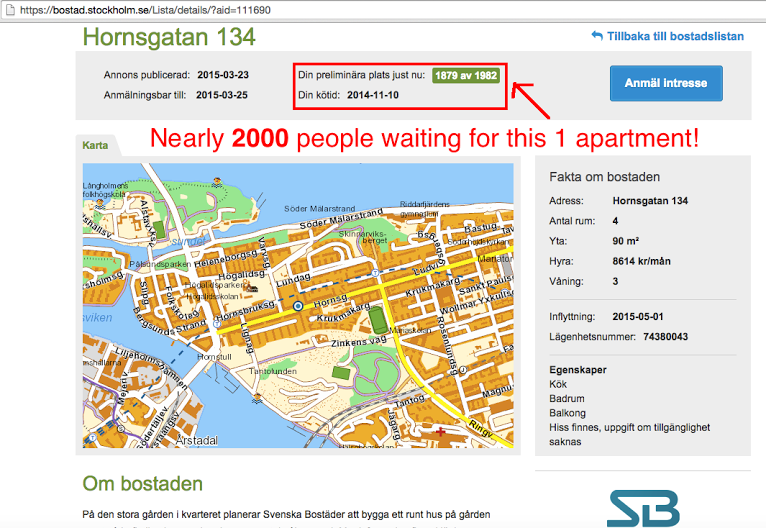If Zoning is Racist Let’s Start Acting like It
Much has been written and said about the recommendations of the Mayor’s Housing Affordability and Livability (HALA) Committee. I’m going to write about these comments this week. The first post is this one on race, class, and zoning. The claim has been made that Seattle’s zoning is by its very nature, racist and classest. Efforts by neighbors to fight off new development of housing is protecting that underlying institution, single-family zoning. I suggest that if this is the case (and I think it is), we’re morally obligated to attribute more significance to angry neighbor driven efforts than simply having a “difference of opinion.”
According to Alan Durning, Executive Director of Sightline (a green city agenda think tank) and a member of HALA, members of the mayor’s task force (from both social justice and urbanist backgrounds) experienced a break-through moment during a presentation given by a representative from the city’s Race and Social Justice Initiative on redlining in Seattle. “The presenter throws a map up on the screen of the historic red lining in the city of Seattle. And then a map of current population by race and ethnicity. And it’s the same thing,” says Durning. “[the committee was like] ‘oh, right. It’s [segregation] baked into the design of the city.’”
Our current zoning system, which restricts low-income people to a tiny percentage of the city and preserves two-thirds of the city as exclusive enclaves for mostly wealthy homeowners, has its roots in racism and classism.
That may not be the motivation of current Seattle homeowners who want to preserve these enclaves today, and certainly there are no explicit racial rules or covenants anymore, but any honest single-family neighborhood resident should admit that he or she is the beneficiary of a system built on racist, classist housing policies.
Now, the syllogism is clear, at least to me, in these conclusions. The very nature of zoning is intended to segregate uses from each other (as I’ve pointed out before (over and over again). And this segregation of uses leads to segregation of people. When we built the code, the intention was to keep residential use away from other uses, but also some people away from other people. This lives on today when angry neighbors use zoning to fight off efforts to integrate new housing types and new people into their neighborhoods. Efforts to destroy microhousing is the best example of this.
Therefore, efforts to destroy microhousing by angry neighbors are not inherently racist themselves, they are at least, according to people like Durning and Barnett, using a racist tool to accomplish the outcome they seek. And their efforts paid off? Why? Because the Seattle City Council engaged in a process, presided over by Councilmember Mike O’Brien to dismantle and destroy microhousing.
The end of microhousing as we knew it was a story of angry, entitled, mostly white single-family homeowners, using a racist tool to direct the Seattle City Council to pull the plug on a housing product that is housing thousands of people affordably in our city.
Where is the outrage? Shouldn’t there be marches? Shouldn’t there be protests? Shouldn’t, at least, some outraged petitions be circulated and signed demanding reversal of the decision? How about simply not endorsing Mike O’Brien for reelection and withholding contributions.
Nope.
Here’s Seattle Transit Blog’s endorsement of Councilmember O’Brien:
District 6: Mike O’Brien has been an urbanist favorite on transportation and land use for his entire political career. He is a deep thinker on transit issues, a good presence on the Sound Transit board, and willing to stand up to the SOV lobby to allow others to safely share the road. On land use, we are increasingly concerned about his statements about preserving the ‘character’ of single-family neighborhoods and opposing additional density there. Also troublesome are recent gestures toward needlessly restricting the number of units, or paying for affordable housing by adding costs to new housing supply.
“Well Mike (Seattlites have annoying habit of being over familiar with our elected officials, calling them by their first names, something I wish we’d stop. But I digress), you’ve been aiding and abetting angry neighbors as they use an inherently racist system, zoning, to keep new people out of our city. But you’re such a nice guy and so good on other issues. You’re such a deep thinker on all  this (although one wonders why someone holding an MBA still doubts supply and demand) that even though what the neighbors are doing and what you’re doing to help them is is, well, immoral, we’re still going to endorse you. You are our friend.”
this (although one wonders why someone holding an MBA still doubts supply and demand) that even though what the neighbors are doing and what you’re doing to help them is is, well, immoral, we’re still going to endorse you. You are our friend.”
That’s how it works in Seattle. A mostly white group of “urbanists” (a term I’ve come to despise) drops a bomb on the discourse about housing by introducing race into the discussion, implying (correctly I think) that there is something vile and wrong and even racist about NIMBY efforts to slow growth. Then these same “urbanists” glad hand the politicians that aided and abetted this nastiness, slap them on the back and give them endorsements and money. Councilmember O’Brien doesn’t even have to stop smiling.
Let me make something really clear here. I find that the introduction of race into the discussion of Seattle’s housing future by people I admire and respect appropriate. However, as a person of color myself and as someone who faces on a regular basis the angry mob of entitled single-family neighbors calling for more restrictive housing policies, I don’t think that simply raising the issue, pointing out the facts, and then discussing race is enough.
Racism is not a difference of opinion. It’s one thing to say, “that building makes me look fat!” It is quite another to bow to that red herring and cover story, and make bad and exclusionary housing policy out of them. And it’s even worse if the underlying system to enact and patrol this exclusionary policy is facilitated and guided by a Councilmember who casts himself as a champion of social justice.
I’ve been outraged a long time. Are you? Are you willing to withhold your vote, money, and endorsement of Councilmember O’Brien and others who pander to angry neighbors? Will you please ask for your endorsement and money back from him until he acts like a champion of social justice not a zookeeper of the wild animals that some single-family neighbors are becoming. We can’t simply keep throwing meat into the cage especially when the meat is much needed housing units.
Let’s then turn outrage into good outcomes: a better, fairer, affordable, and livable city for everyone. It starts with acting like what we say is as serious as it sounds.
Watch the Rent Control Debate
There was a good deal of coverage of last night’s debate. It took awhile, but embedded above is the whole debate. I had a lot of fun engaging with Councilmembers Sawant and Licata and the audience. For some of us, what looks like a tense and stressful argument is really an exciting battle of ideas and intellectual skill. Did the debate matter though? Some people think there are better things to argue about. I agree. The rent control argument is part legacy for Councilmember Licata and part campaign organizing tool for Councilmember Sawant: It isn’t going to happen here anytime soon since the City is preempted from enacting rent control.
Still, this gave me an opportunity to engage Councilmembers outside of a two minute comment, an office visit, or an e-mail or letter. I hit Councilmember Licata repeatedly on his efforts to undermine the Multifamily Tax Exemption program, a program that works. I paraphrased Margaret Thatcher (something that might have gotten be drowned out by boos had the audience known) when I said that Councilmember Licata would rather have the poor poorer provided the rich were less rich. This is the kind of thinking that could ruin our city. Anyway, take a look and see who you thought got the better of the argument.
A Letter from Stockholm on Rent Control
(The following was written by a resident of Stockholm as a letter from Stockholm to Seattle. You can watch last week’s rent control debate in it’s entirety here)
Dear Seattle,
I am writing to you because I heard that you are looking at rent control.
Seattle, you need to ask your citizens this: How would citizens like it if they walked into a rental agency and the agent told them to register and come back in 10 years?
I’m not joking. The image above is a scan of a booklet sent to a rental applicant by Stockholm City Council’s rental housing service. See those numbers on the map? That’s the waiting time for an apartment in years. Yes, years. Look at the inner city – people are waiting for 10-20 years to get a rental apartment, and around 7-8 years in my suburbs. (Red keys = new apartments, green keys = existing apartments).
Stockholm City Council now has an official housing queue, where 1 day waiting = 1 point. To get an apartment you need both money for the rent and enough points to be the first in line. Recently an apartment in inner Stockholm became available. In just 5 days, 2000 people had applied for the apartment. The person who got the apartment had been waiting in the official housing queue since 1989!
Rent controls reduced my housing supply and promoted a lack of availability in my existing housing stock. This was a surprise because the Swedish Government didn’t cap rents directly- it limited rises to those negotiated between the landlord and tenant associations; based on analysis of costs and apartment ‘utility values’ that described location and apartment quality.
I also noticed landlords started selling off rental apartments to owner-occupiers. Why? The rent control means rental apartments have two sale values simultaneously – a value as a rental apartment, and a higher value as a private condominium. Because rent control lowers a property’s value as a rental apartment, landlords withdrew rental apartments and started selling them at a higher price as private condominiums. This reduced the number of rental apartments available within the existing housing stock. So, if you don’t want to wait you have to save 20% deposit and buy the place you want.
It gets worse. Rent control divided renters into two distinct classes – ‘first-hand’ contract renters and ‘second-hand’ contract renters. The first hand renters generally enjoy unlimited tenure security and low, rental increases. The ‘second-hand’ contract renters have been reduced to hopping between short term sublet rooms or sublet apartments the first hand renters hold when the first hand renters go on summer vacation, move in with their new partner or move to another city for work. In other words, tenure security was extended for some renters only by reducing it for other renters.
It must be remembered that the social function of profit is to signal to society where more resources need to be invested and provide the incentive for people to invest in accordance with those needs. The higher the profit, the greater the need, and the more powerful the incentive is to meet that need.
Government does have a role to help move things along and speed things up. A stick-and-carrot approach of a land tax on the value of all land (i.e. ignoring the value of buildings) to fund subsidies and co-investments for new apartment construction, and rental relief payments, should be seriously looked at before it is too late. Land value taxation promotes construction, isn’t passed on to renters, and generates increasing revenue as land values increase. Subsidies for new rental apartments also promote construction.
Rising rents and housing affordability do require collective political action. But rent controls are not the answer; they will make the problem even worse because they will destroy housing availability and not build a single new house. Land value taxation and new apartment subsidies are answers.
Seattle, rent controls don’t work – just ask my good friend, San Francisco.
With Love,
Stockholm.
Linked material:
What we do – Hyresgastforeningen
http://www.hyresgastforeningen.se/In_English/Sidor/What-we-do.aspx
“Your rent is basically determined by the ‘utility value’ of your apartment. Utility value means that the rent should be proportionate to the quality and standard of the apartment. We think this is reasonable because it results in fair rents for everyone. The rent should reflect the general value that tenants assign to various characteristics of their housing. This includes things like the size of the apartment, number of rooms, floor plan, standard, condition, the housing environment, the location of the building, local services and the attractiveness of the area.”
Rent Setting in Sweden SABO
http://www.sabo.se/om_sabo/english/Documents/Rent%20setting%20in%20Sweden.pdf
Swede endures 28-year wait for Stockholm flat
http://www.thelocal.se/20130328/46996
Stockholm City Council Housing Service waiting statistics (in Swedish –use Google translate to read)
http://bostad.stockholm.se/statistik/
Swedish Housing Crisis Committee Report (2014)
http://www.bokriskommitten.se/wp-content/uploads/2014/09/Bokriskommitten_eng_web.pdf
Land value taxation- Earthshare Canada
http://www.youtube.com/watch?v=jFQgOy-5Tng
Land Taxation – Tax Justice Network
http://www.taxjustice.net/cms/upload/pdf/TJF_6-1-1.pdf
Why land value taxes are so popular, yet so rare
http://www.economist.com/blogs/economist-explains/2014/11/economist-explains-0
“Landlords are unable to pass the tax on to tenants, because the supply and demand of rented land is unchanged”
Hold the Date
Plesse come out to the debate!
Look for more details but please attend if you can.
Linkage Fee Dead: NIMBYs Can’t Hide Behind Social Justice Anymore
As I pointed out yesterday there are some truly bold and forward thinking ideas in the report of the Mayor’s Housing Affordability and Livability Agenda (HALA) Committee report. This is especially true when it comes to addressing Seattle’s longstanding view that single-family zones were off the table for more density. The HALA Report pushes that envelope. But it also cures the biggest headache of the last year, Councilmember O’Brien’s proposed linkage tax on new development. With a compromise between non-profit housing advocates, developers, and Councilmember O’Brien the HALA Committee has removed a major cover for NIMBY opposition growth, social and economic disparity created by growth that can only be offset by extracting fees from new housing.
By creating a trade between upzones for more housing in all multifamily zones and mandatory performance by including subsidized housing in the floor space created by additional density, the HALA creates a true compromise. The city gets more new housing in exchange for setting aside a percentage of those new units for a set number or percentage of rent restricted units. Here’s how it would work.
The City should: (1) boost market capacity by extensive citywide upzoning of residential and commercial zones; and (2) match this increased capacity with a mandate to build affordable housing in emerging market-rate buildings. To achieve these goals, this program will encourage market-rate housing developers to produce units versus paying a fee in lieu of performance.
The report suggests that a fee be assessed on commercial development to generate money to fund construction of new housing. Together, these two elements would produce about 6,000 new units at or below 60 percent Area Median Income (AMI).
Now, inclusionary zoning is a bad idea in principle because it simply subsidizes the affordable units at the expense of the remaining units. That just drives up housing prices in whatever isn’t restricted. However, there is an exchange of value in this proposal. There is more leasable space created because of the rezones. The devil is in the details though since if the inclusion requirement is too high people might not build anything. But this is a compromise that is really is a compromise. It isn’t punitive of new growth and the new affordable units will be created far more efficiently and we get more housing. And our builders end up giving something because they’ll have to include rent restricted units in their new projects affected by rezones.
Most importantly, the development community and the non-profit housing community are in agreement on this proposal as is Councilmember O’Brien. Now single-family neighborhood groups can no longer use affordability as cover for their protection of the status quo. How can an angry neighbor in a single-family neighborhood argue now that we shouldn’t have more housing in an urban village because the developer is “laughing all the way to the bank” because of the huge profits she is making. Not only will the developer be building affordable units efficiently but their projects will have the support of people who advocate for affordable housing.
Breaking the false link between NIMBY protectionism and affordability can transform our citywide discussion of housing. No more can the angry neighbors say they’re just seeking social justice for the poor when they demand more fees, rules, and limits to housing supply. The new deal proposed by HALA is based on the idea that, indeed, more housing supply does off set higher prices and when the City Council upzones an area that upzone creates even more rent restricted units for the people and families that NIMBYs claim to care about. I can’t wait to see the NIMBYs fight a rezone that has the support of developers and non-profit housing advocates because it hurts the poor. That argument won’t hold up any more in a post HALA Seattle.







